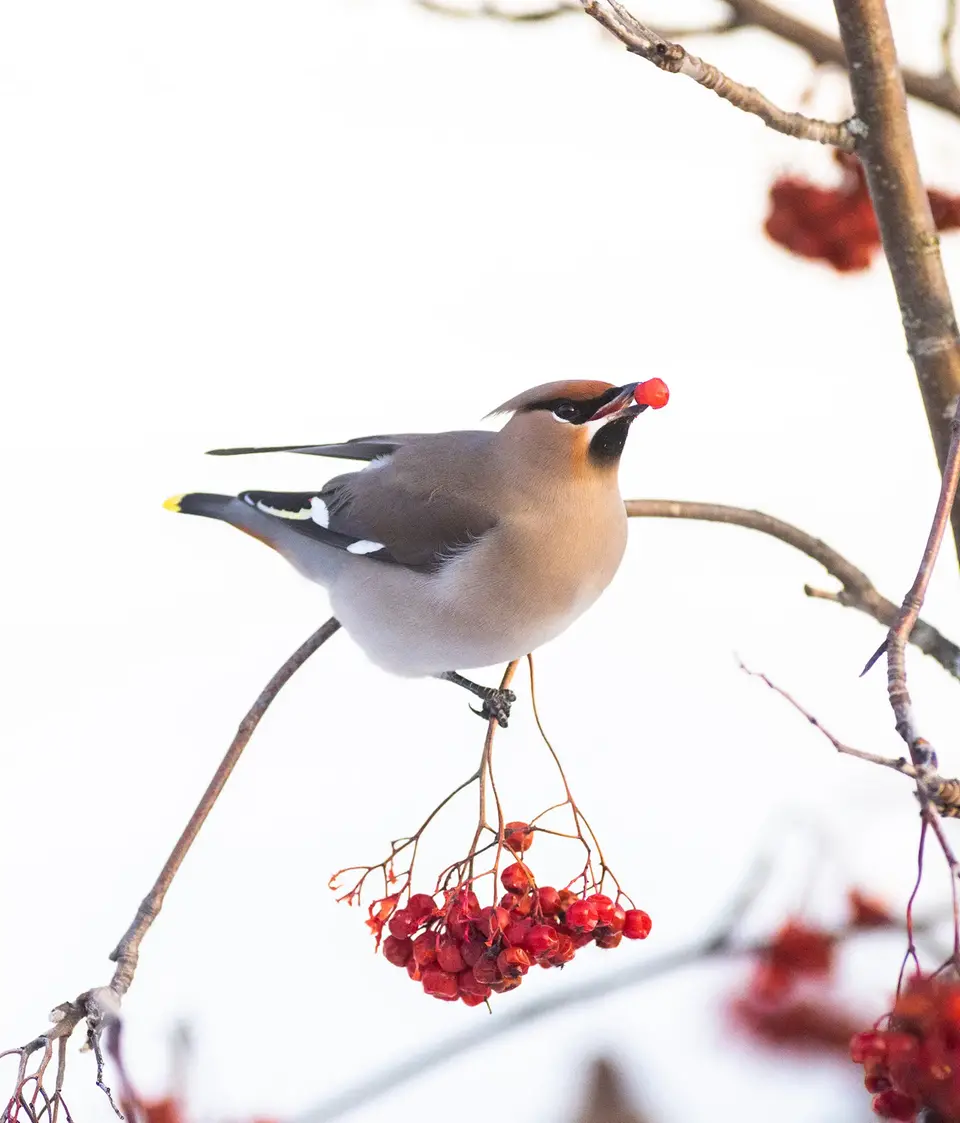Outdoor life
A richer life with a little birdie on birds
On a veranda in Hjoggböleliden, David Möller sits and looks out over the camps. And listening. He often does that. From here he can hear the occasional black grouse, see cranes and geese strolling around waiting for the migratory birds to pass by. But he also catches glimpses of birds such as marsh harrier, marsh harrier and brown jay, which he has seen twice in the last week. And heather plovers!
- "The blue jay should be coming any day now," says David.
It's late summer, and on this particular evening he's just taking a short walk with his binoculars in the immediate vicinity to do what he loves most: bird watching.
He moved here from Dalarna last summer with his returning partner Evelina and son Emil, 3 years old. On a day-to-day basis, David works as a plumbing engineer, but almost every spare moment is devoted to bird watching.
- It takes time. This disease is getting worse. I rarely go anywhere without my binoculars and feel stupid if I forget to bring them," says David with a smile.
He talks excitedly about the rarities that get his pulse racing - like when the white-backed woodpecker flew past the house, or when the experience of seeing a great tit at Bjuröklubb was so powerful that he drove into the ditch.
- "Bird watching is a great way to discover your surroundings. I have traveled a lot. My first summer here I was out cycling every night - it never gets dark!
In Skellefteå municipality there are about 20 full-fledged birdwatchers. That is, people who actively look for birds and report their observations to Artportalen. This is a small number, especially compared to the student towns that often have hundreds of enthusiasts. Perhaps this is due to the interest of students who discover unfamiliar species in a new city?

David's own interest started at the age of 16, but it wasn't until 2019 when he studied in Gothenburg that it really took off. Now he is 33 years old and more passionate than ever.
- "I don't know what fascinates me about birds. I guess it's the thrill of discovering them. Then they are beautiful and they are around us all the time. It's enriching in everyday life, to know about them," says David, who in a way mourns that not more people share his passion.
- "Unfortunately, we share a little too often with those who don't understand, it often turns into long monologues," he says and laughs.
Tonight's tour does not offer any surprises, but at least we glimpse swallows, ring doves and bushtits.
- I have no favorite bird, all are beautiful in their own way and the size of the birds is not important. But large numbers are powerful," says David, strolling back towards the house.
- "Now you can hear the yellow eagle," he says happily.
The year with birds in Skellefteå
Winter in Skellefteå
Good time to watch in central Skellefteå or at the bird feeders. Many birds such as bullfinches, nuthatches and woodpeckers come to town now. If the sea is open, Kågnäsudden and Bjuröklubb offer loons, long-tailed ducks and sandpipers. If there are other open watercourses, such as the Skellefteälven river, at Bergsbydammen or under Sundgrundsbron, you can find wintering seabirds there. Starling can be found in open flowing water in Bygdsiljum, along the Bureälven and Klintforsån rivers. In good rowanberry years, you can see birds such as cattails, pine grosbeaks and wintering thrushes. In February-March the owls start playing. Then you can go out after dusk and listen along forest roads. The most common are the barn owl and the tawny owl, but with a bit of luck you may also hear the barn owl or the barn owl.
Springtime
The highlight. The migratory birds return. The first ones already in late March and the last ones arrive in early June. One of the highlights is when geese, cranes and whooper swans rest in large numbers. Also a good time to see birds of prey. Good places include Ersmarksängarna/Kusmark where geese, cranes and swans rest, Gärdefjärden, Ostträsket, Åvikskärret, Innervik, Björnsholmen (at low tide) where many waders rest on the reef that protrudes into Ursviksfjärden. The Skellefteälven river in central Skellefteå, as well as the area around Kyrkholmen, Lustholmen, Rovön and Medlefors are also nice, both for some seabirds and singers. On Lustholmen/Rovön there are good chances to see or hear species such as stonechats, goldfinches, blackcaps, rosefinches, cuckoos and lesser spotted woodpeckers.
Summertime
Early June is the best time to listen to warblers. You may find species such as swifts, warblers or more unusual species such as nightingales, bush or marsh warblers. As the last migratory birds arrive, the southward migration of some species begins. Waders migrate throughout the summer. Species such as black snipe, marsh snipe, coastal snipe and curlew pass by on their way south. July is the weakest time for viewing. The birds have stopped singing and many are on their nests, but as more and more of the young start to grow up and leave the nests, the area starts to buzz with life again with chicks screaming for food and parents feeding. The Skellefteälven river and the entire coastal strip are good places to watch during the summer.
Autumn
There are never so many birds, in terms of numbers, to watch as now, when all the young have left their nests and many are heading south. However, it can be tricky to identify the species of many birds. For one thing, juveniles often have different plumage than adults, and many adults change their plumage and look different too. Good locations are the coast, especially Bjuröklubb. Large numbers of geese and birds of prey such as buzzards and buzzards, white-tailed eagles, goshawks and sparrowhawks gather in the meadows of Frostkåge. In late fall, there's also a chance of finding less common eastern species such as taiga warbler and kingfisher along the coast.
What doyou need?
Binoculars - Hand-held binoculars in the first instance, supplemented by tube binoculars for longer distance bird watching.
Camera - so that you can document your findings.
Notebook or cell phone to take notes.
Bird book or mobile phone app.
Tips onapps and websites:
Artportalen. Here you can report your findings and also see what others have reported. A good site to see what has been observed and also learn what you can see, when and where.
Bird Guide. Very good bird book that is also available as an app.
Birdnet. App that helps you with the sounds of birds. You simply record the sound of the birds and the app tells you what kind of bird it is. Often works well, but not always.
Facebook. The groups Fåglar i Västerbotten and Fåglar inpå knuten, where you can see what others have seen and get help with species identification.

Sidinformation
- Senast uppdaterad:
- 7 November 2023

